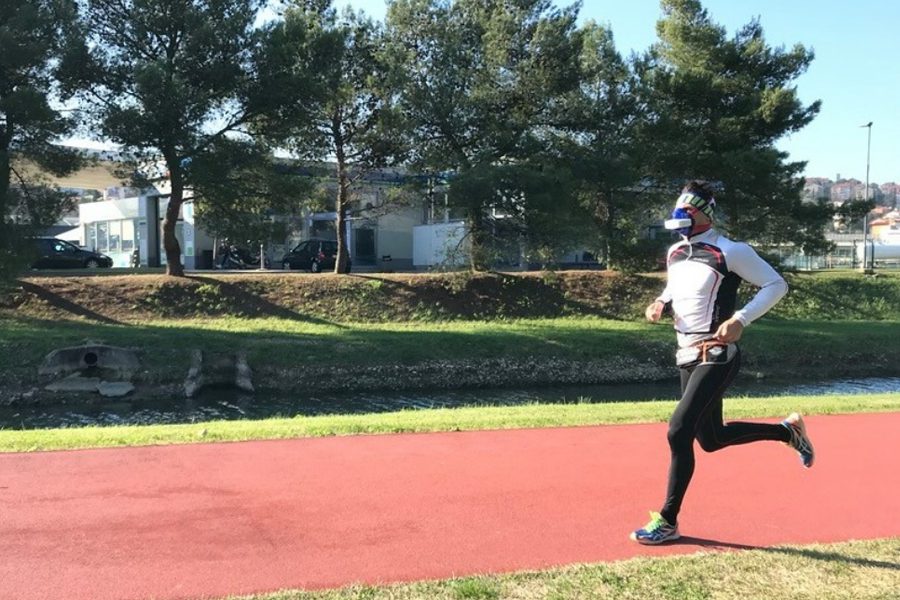How to Improve Aerobic Fitness: Start by Forgetting About Aerobic and Anaerobic Training
Today, the concept of aerobic fitness is at the forefront of mainstream conversations about exercise and athletic training. When you conduct a Google search about improving aerobic endurance, you’ll find dozens of articles touting strategies and tips for how to use these concepts to boost your fitness and achieve your goals. But there’s a problemContinue reading "How to Improve Aerobic Fitness: Start by Forgetting About Aerobic and Anaerobic Training"

Today, the concept of aerobic fitness is at the forefront of mainstream conversations about exercise and athletic training.
When you conduct a Google search about improving aerobic endurance, you’ll find dozens of articles touting strategies and tips for how to use these concepts to boost your fitness and achieve your goals.
But there’s a problem with this entire line of thinking: it’s inherently flawed and not rooted in athletic science—at least not in the capacity that most people believe it to be.
In order to truly improve your athletic performance, the first step is to forget about the concept of aerobic and anaerobic training. Then, you need to shift your thinking and embrace training philosophies rooted in true exercise science.
Here’s what you need to know.
The History of the Misconception About Aerobic and Anaerobic Fitness

It’s been almost a century since the terms “aerobic” and “anaerobic” were developed.
Initially, these terms were derived from the molecular science of how your body breaks down fuel sources, such as sugar, to create energy.
By their simplest definitions, “aerobic” means “with oxygen” and “anaerobic” means “without oxygen.”
Every single cell in your body needs oxygen to survive—and this includes muscle cells.
However, there are certain pathways within those cells that allow for the transformation of fuel into energy without oxygen.
So, while your cells are constantly breaking down fuel sources and converting them into energy, this process can happen both with and without oxygen.
Thus: “aerobic” and “anaerobic.”
Somewhere along the line, though, the general public applied a new meaning to these terms—one that described exercise intensities rather than a metabolic process that occurs within the body.
And that’s where the misinformation began.
Why The Concept of Aerobic and Anaerobic Training is a Fallacy
Today, athletes and fitness enthusiasts think of this concept in two ways:
- Aerobic exercise is seen as periods of consistent, low-intensity output
- Anaerobic exercise is viewed as short, quick bursts of high-intensity output
Leveraging these varied intensities is an essential component of increasing your overall fitness, but the idea of aerobic and anaerobic training is misleading—and might even be causing you to train in the wrong ways.
Think of it this way.
If you consider the traditional definitions of aerobic and anaerobic—with oxygen or without oxygen—the concept of anaerobic training would lead you to believe that you’re training without oxygen.
After all, the harder you train, the more out-of-breath you become, and, intuitively, the less oxygen you’re getting.
But it’s actually the complete opposite.
Your muscle cells need oxygen in order to survive. Without it, your cells would die. And they need even more oxygen to conduct increased physical exertion.
The faster you go and the harder you work, the more oxygen your body needs. You simply become more and more aerobic, using increasing amounts of oxygen.
At your highest exercise intensity, you’re using the most amount of oxygen—not the least.
To that end, you’re never in an anaerobic state—especially not when you’re training hard.
So, in order to truly improve your fitness and achieve your goals—whether it’s becoming healthier on a daily basis or training to run a marathon—it’s essential to reconsider the way you think about athletic output.
Forget Aerobic Fitness: The Right Way to Approach Your Athletic Training

Instead of looking at how to improve aerobic fitness, you should instead pivot your thinking toward tools and measurements that truly encapsulate what’s happening in your body while you exercise.
There are a few you need to consider.
The first is VO2max.
This is an abbreviated term for maximal oxygen consumption, which refers to the maximum amount of oxygen that you can utilize during intense or maximal exercise.
It’s measured in milliliters of oxygen per kilogram of body weight per minute (ml/kg/min) with essentially two determining factors:
- How much blood your heart can pump out to the muscles with each beat (cardiac output)
- How efficiently your muscles can extract the oxygen from the blood and utilize it
This measurement is generally considered the best indicator of cardiovascular fitness and endurance potential. The more oxygen you can use during high-level exercise, the more energy you can produce.
That’s where tools like VO2 Master come into play. Our portable analyzer gives you the ability to easily gauge your VO2max alongside a number of important respiratory metrics that truly reflect what’s happening inside your body while you exercise.
Then, equipped with these accurate insights, you can map out your ventilatory thresholds—which can help define your five training zones.
These five training zones encapsulate your true exercise intensities—the ones that most people are actually looking for when they explore the concepts of aerobic and anaerobic training.
With these measurements, Zones 1 through 3 represent the intensity you might traditionally think of as “aerobic workouts.” Zones 4 and 5 reflect what you might consider to be “anaerobic workouts.”
The Benefits of Optimal Oxygen Consumption in Your Body
Science has proven that people who use oxygen at a higher rate are generally healthier.
They end up with fewer medical issues. They use less energy to get through the activities involved with daily living which means they are less fatigued. And, as a result, they have a greater buffer to be able to do more strenuous things and enjoy exercise and the endorphins that come along with training.
No matter what your fitness goals might be, the key is to define your own unique training intensities and then use those intensities, also known as training zones to exercise in a way that will achieve them—whether it’s burning fat, building muscle, or improving your cardiovascular fitness so that you can reach the finish line of your race.
And in order to train effectively, it’s essential to forego the traditional notion of “aerobic training” and “anaerobic training.”
Instead, your focus should be to exercise based on accurate measurements of what’s really going on within your body while you exercise at the training intensities required to achieve your desired results.
